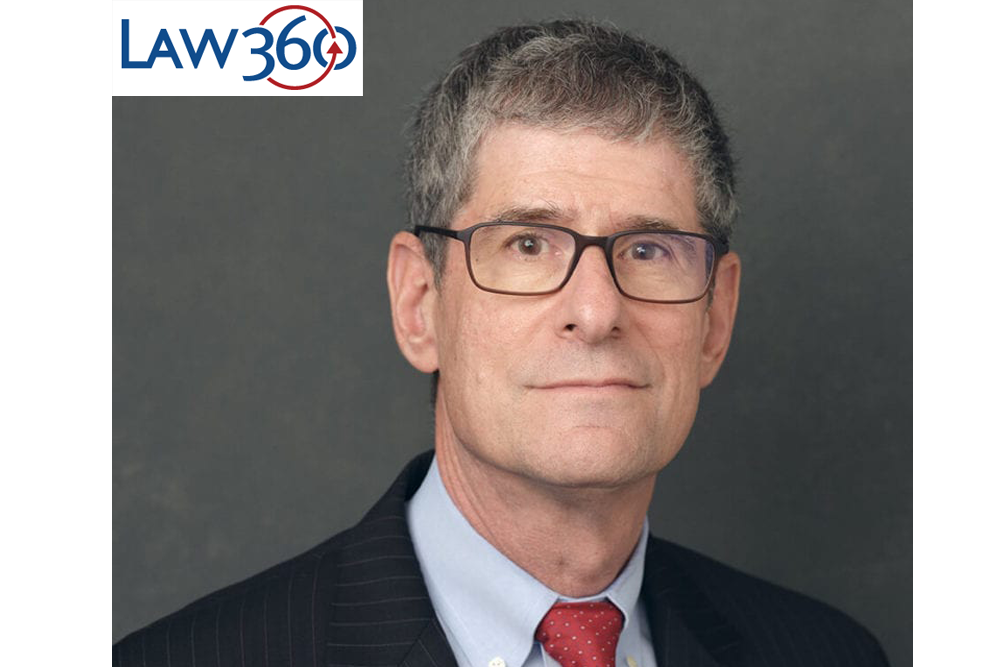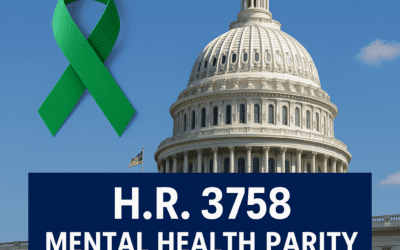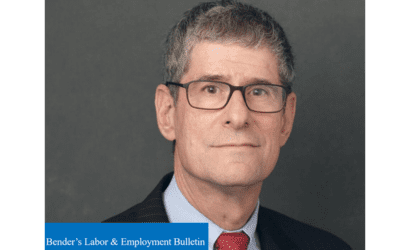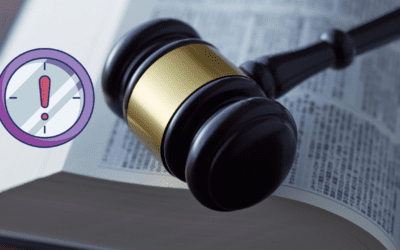On Jan. 29, a judge in the U.S. District Court for the District of Rhode Island recently wrote an opinion in a sort of “man bites dog” Employee Retirement Income Security Act case, Verizon Sickness & Accident Disability Benefit Plan v. Rogers.[1]
Rather than the typical scenario of a participant in an employee benefit plan suing the plan to recover benefits, in Rogers, the plan was seeking to recover personal injury settlement funds over which it asserted a lien. The case stemmed from a personal injury settlement received by Jacqueline Rogers, a Verizon Communications Inc. employee who had been receiving disability benefits.
However, in an odd twist, Rogers disappeared, and the plan was seeking to enforce its lien against her attorney.[2] After analyzing the issues presented, the court determined that Verizon failed to sustain its burden of proving that it had a right to recoup funds earned by the attorneys who represented Rogers in her personal injury claim.
The court’s ruling clarified that the party seeking to enforce its lien bears the burden of proving the existence of a fund over which a lien can be asserted, and also established the need to prove the ongoing existence of the funds at issue. Prior to this ruling, those issues were unsettled.
The litigation had to do with a provision in the benefit plan that gave Verizon an equitable lien to recoup disability benefits from a participant in the event the participant receives duplicative payments from third-party sources, such as Social Security disability, workers’ compensation or personal injury settlements.
Based on earlier U.S. Supreme Court rulings, the court determined that Title 29 of the U.S. Code, Section 1132(a)(3), permits a plan to seek equitable relief against a participant to enforce its equitable lien.[3] Only equitable remedies are permitted, though, a point reiterated most recently by the U.S. Supreme Court’s 2016 ruling in Montanile v. Board of Trustees of the National Elevator Industry Health Benefit Plan.[4]
In Rogers, the court explained the difference between an equitable and a legal remedy, pointing out:
An equitable remedy involves recovery from a specific, identifiable pool of funds to which the plaintiff has established an entitlement: in this case, the specific identifiable pool of funds is the money received by Sands in settlement for the car crash. A legal remedy involves satisfaction of a personal obligation, an owing of money generally.
Thus, Verizon’s claim was limited to seeking recovery from the settlement funds, not from a party’s personal assets.
Applying that principle, the participant’s attorney maintained that Verizon could not recover because the settlement funds had been disbursed and were therefore dissipated. In deciding the issue, the court first addressed a key question that was determinative of the outcome: “[W]ho has the burden of proof on whether the funds have been dissipated?”
Verizon admitted that if it had the burden, it would lose. The court deemed it a question of fact as to whether the money in question had indeed been spent.
The court laid out the facts, which showed how the settlement proceeds had been distributed, some of which had been paid back to Verizon’s health plan to reimburse it for healthcare expenditures that arose from Rogers’ injury.
On the burden of proof issue, though, the court noted that no prior ruling had explicitly established which party had the burden of proof. However, the court determined that both “logic and language” in Supreme Court rulings placed the burden of proof on Verizon.
From a logical standpoint, the court noted that a party claiming an entitlement to an equitable remedy needed to prove the existence of the fund over which the lien has been asserted.
Citing Montanile, and the Supreme Court’s 2006 ruling in Sereboff v. Mid Atlantic Medical Services Inc.,[5] which involved a health insurance reimbursement claim, the court explained that since the plan needed to identify a specific fund over which it was asserting a lien, that requirement placed the burden of proof on the plan to demonstrate the specific funds remained in existence. The court cited several cases that implied the burden was also on the plan to show the funds in question had not been dissipated.[6]
With respect to that second burden, the court explained Verizon needed to prove the funds were not dissipated using a methodology called “lowest intermediate balance.” What that means is, the court looks at the account into which the funds at issue were deposited, and if the balance in the account was $0, that would mean the funds had been completely dissipated. If the account balance never fell to $0, it would show that funds remained over which an entitlement to reimbursement could be claimed.[7]
The court ruled that Verizon could not prove there had not been complete dissipation since it failed to subpoena bank records or initiate discovery on the issue. The court was also critical of Verizon for not taking more proactive steps to protect its lien after it learned of the personal injury lawsuit, such as moving to enjoin the participant from disbursing settlement funds until the lien was satisfied.
The same issue arose in Montanile, where the Supreme Court was critical of the plan for failing to protect its reimbursement rights while a personal injury lawsuit was pending, and waiting until after the settlement funds had been disbursed to seek to enforce its lien.
Since the Supreme Court first waded into this issue in Great-West Life & Annuity Insurance Co. v. Knudson in 2002,[8] federal courts have become reluctant to step in as debt collectors for employee benefit plans.
The Rogers case was more unusual than most because the participant had disappeared, and the plan directed its efforts to collect funds from the participant’s personal injury attorney.
Typically, attorneys are not responsible for satisfying a benefit plan’s equitable reimbursement claims unless the lawyer had previously agreed to or had been enjoined from disbursing the settlement funds. That is because, according to the U.S. Court of Appeals for the Eleventh Circuit’s 1993 ruling in Chapman v. Klemick,[9] the participant’s attorney owes no fiduciary obligation to the benefit plan.
However, an attorney may be found liable for tortious interference or even contempt of court for distributing funds after agreeing to protect a fund’s reimbursement rights or being enjoined from doing so.[10] Nonetheless, after Montanile, it is difficult to understand how, in this instance, the attorney could be subject to the plan’s lien since the lien claim was made after the settlement funds were distributed.
Also, in most situations like this, the plan would typically be able to exercise a self-help remedy by withholding future payments. However, while not mentioned in the opinion, it appears that Rogers was no longer receiving benefits, so that option became unavailable.
The significance of this ruling was the court’s determination as to who had the burden of proof. Had the court ruled the other way, it would have been illogical since it would have required the defendant to prove a negative.
The court thus placed the burden where it belonged; and since the only evidence before the court was an affidavit stating that the funds had been spent, the court was left with no choice but to deny Verizon’s claim.
Mark DeBofsky is a shareholder at DeBofsky Law Ltd.
This article was first published by Law 360 on February 12, 2024.
[1] Verizon Sickness and Accident Disability Benefit Plan for New England Assoc. v. Rogers., 2024 U.S. Dist. LEXIS 15057, 2024 WL 323057 (D.R.I. January 29, 2024).
[2] In an earlier ruling, Verizon Sickness & Acc. Disability Benefit Plan for New England Assoc. v. Rogers, 2023 U.S. Dist. LEXIS 43346, 2023 WL 2525208 (D.R.I. March 15, 2023), the court ruled the attorney was properly named and could potentially be required to satisfy the plan’s lien.
[3] See, Great-West Life & Annuity Ins. Co. v. Knudson, 534 U.S. 204 (2002).
[4] Montanile v. Bd. of Trustees of the Nat’l Elevator Industry Health Benefit Plan, 577 U.S. 136, 145 (2016).
[5] Sereboff v. Mid Atl. Med. Serv. Inc., 547 U.S. 356, 362 (2006).
[6] Bilyeu v. Morgan Stanley Long Term Disability Plan, 683 F.3d 1083 (9th Cir. 2012); Central States, SE and SW Areas Pension Fund v. Rodriguez, No. 18-cv-7226, 2021 WL 131419, at *3 (N.D. Ill. Jan. 14, 2021); Epolito v. Prudential Ins. Co. of Am., 737 F. Supp. 2d 1364, 1382 (M.D. Fla. 2010) (citing Restatement of Restitution § 215 cmt. A (1936)); Crawford & Co. Med. Benefit Trust v. Repp, No. 11 C 50155, 2012 WL 716921, at *3 (N.D. Ill. March 6, 2012); Mank ex rel. Hannaford Health Plan v. Green, No. Civ. 03-42-PC, 2003 WL 22078667, at *1 (D. Me. July 30, 2003).
[7] Citing Conn. Gen. Life Inc. Co. v. Universal Inc. Co., 838 F.2d 612, 619 (1st Cir. 1988).
[8] See Note 3, supra.
[9] Chapman v. Klemick, 3 F.3d 1508 (11th Cir. 1993).
[10] See Longaberger v. Kolt, 586 F.3d 459 (6th Cir. 2009); Central States v. Lewis, 745 F.3d 283 (7th Cir. 2014). However, in those cases, the attorney was made aware of and disregarded the equitable lien that had been asserted by the employee benefit plan.







